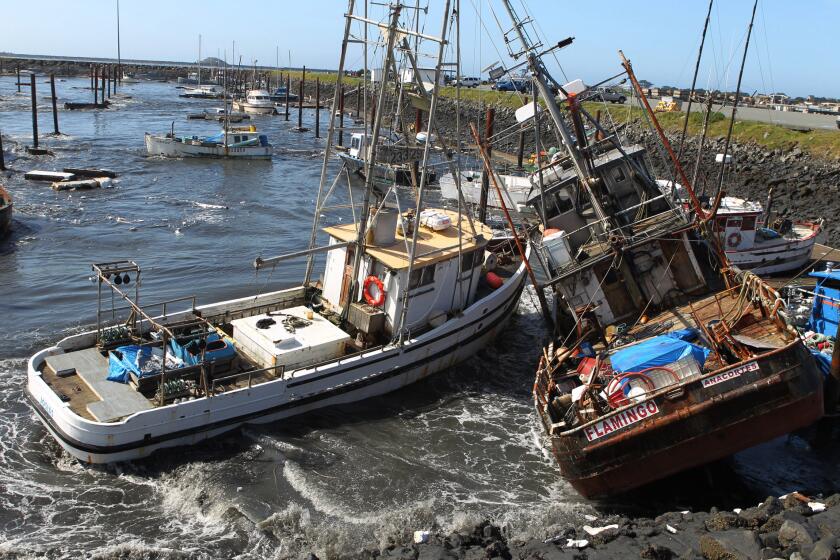Palmdale Residents Accept Neighborhood’s Major Fault
- Share via
The huge yards in front of the houses along Palmdale’s Bayberry Street are a delight to neighborhood children. And residents can boast that they bought their homes, many of which are two-story, for about $130,000 each last year.
Yet this is not a case of a builder gone mad. The company that developed the area was required by law to lay out the enormous yards to keep the houses back from an offshoot of the fearsome San Andreas Fault that runs under the quiet street.
The houses, some of which are 90 feet from the curb, illustrate how Palmdale--one of the fastest-growing cities in California--deals with the fearsome fault zone that crosses its southern sector.
Joseph Hrobar, 66, like other residents of Bayberry Street, says he isn’t concerned about what might come, even after watching the devastation wrought by last month’s 7.1-magnitude temblor in the Bay Area. “When will the Big One come? Maybe tomorrow, maybe 100 years. If we are worried about it all the time, what is life?”
Scientists say it is only a matter of time before a “great” earthquake (one with a magnitude of at least 8) rips through Southern California. The forecasters predict a 60% chance within 30 years for that quake to originate somewhere in the region. There is a 30% chance for such a quake to spring from the Mojave section of the San Andreas that runs through the Antelope Valley.
A great quake could be especially bad news for Palmdale. Because the fault runs through the city, it is expected to get a severe shaking from any great quake along the San Andreas in Southern California. Within Los Angeles County, Palmdale--with a population of 46,000--is one of the most developed areas crossed by the fault.
“It’s going to be a real ‘E’ ride, and we’ve got ringside seats to the main event,” said Mark Spykerman, a Lancaster engineering geologist who advises Antelope Valley developers on their projects.
Estimates differ, but geologists predict that a great earthquake will cause a 10- to 20-foot shift of land from one side of the main fault to the other, enough to slide the slow lane of the Antelope Valley Freeway into the fast lane. If that doesn’t close the freeway, forecasters say landslides or road collapses are likely between Palmdale and the San Fernando Valley.
The result, earthquake experts say, is that Palmdale probably will be cut off from the Los Angeles area for at least several days. If such a temblor should strike during a workday, many thousands of Palmdale residents who work in the Los Angeles Basin will be blocked from returning home.
Within the city, damage will be extensive. One picture of how a quake might affect Palmdale came from a 1982 state report envisioning a repeat of the 8.3-magnitude Fort Tejon quake of 1857, the last time the portion of the San Andreas through the Antelope Valley broke loose.
In and around Palmdale, major regional arteries might be severed, including two major Southern Pacific railroad lines and the California Aqueduct that serves Los Angeles, the state report said.
The aqueduct, the major channel moving water north to south, crosses the San Andreas at two points near Palmdale. The aqueduct could be closed for three to six months while workers try to repair expected ruptures, the state report said. Leaks from the aqueduct or Palmdale Lake, a reservoir for the city, could hamper general repair efforts.
The runways at Air Force Plant 42 in Palmdale, where the city of Los Angeles hopes to build a regional airport, are predicted to survive the quake, which will allow relief supplies to be flown in. But the state report forecasts that a major regional natural gas transmission line running through the city could be ruptured and have to be closed.
Not all would be lost, though, even in a great quake. The good news for Palmdale is that experts believe that most of the many thousands of homes built since the tougher seismic standards of the 1970s, including those on Bayberry Street, will come through battered but structurally sound and livable.
In fact, because most of the city has sprung up in recent years, most buildings are earthquake resistant, experts say.
More to Read
Sign up for Essential California
The most important California stories and recommendations in your inbox every morning.
You may occasionally receive promotional content from the Los Angeles Times.













